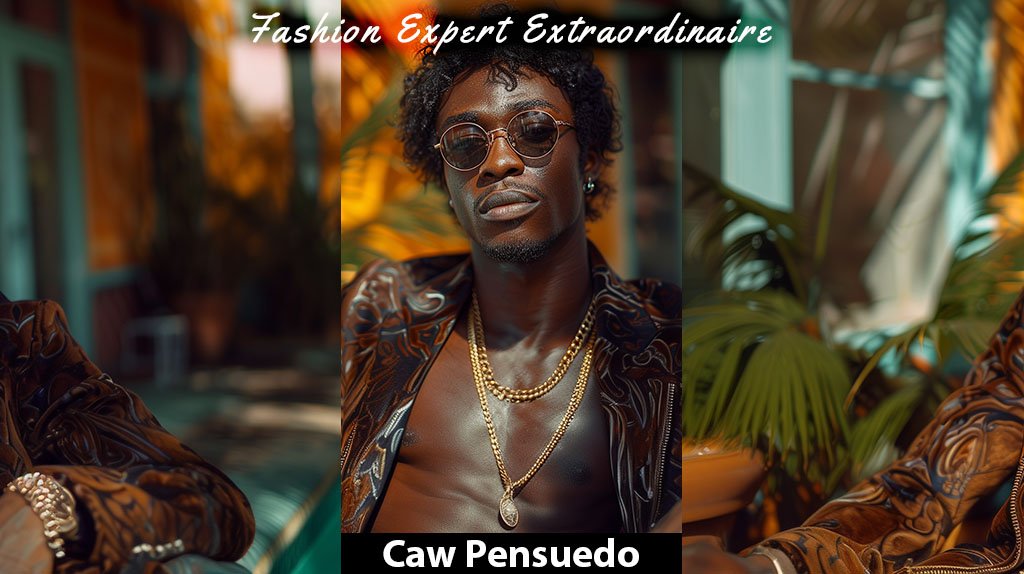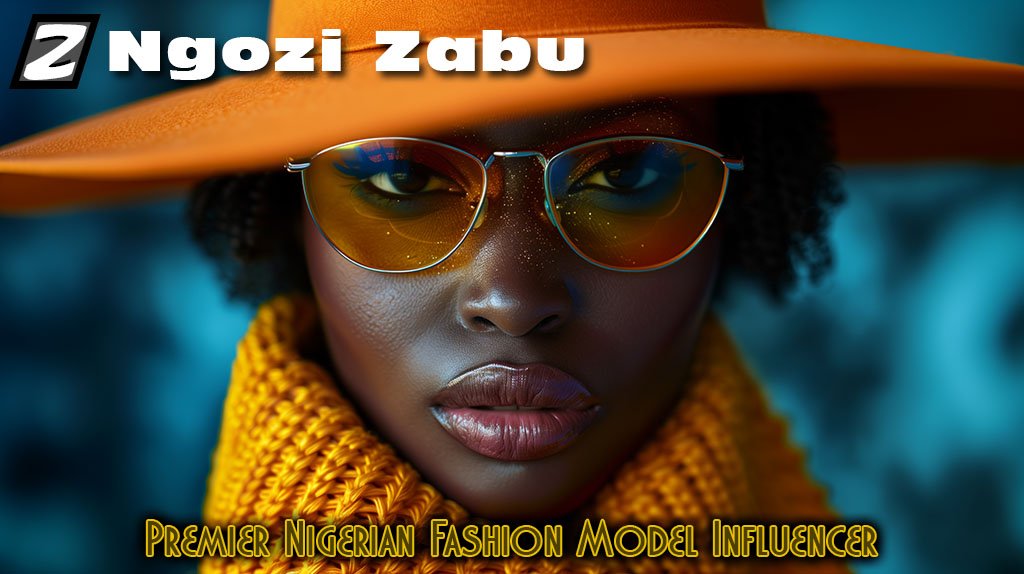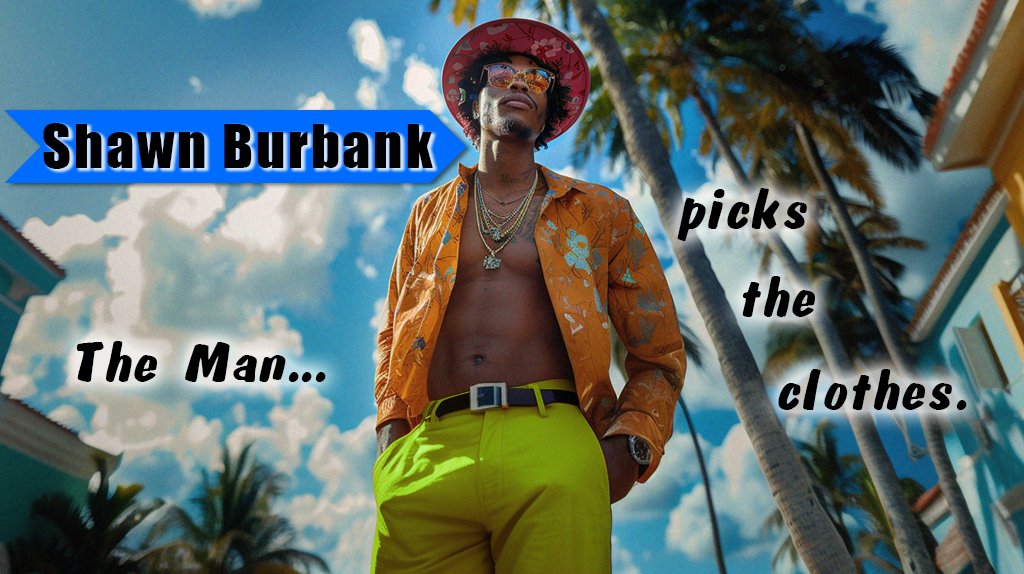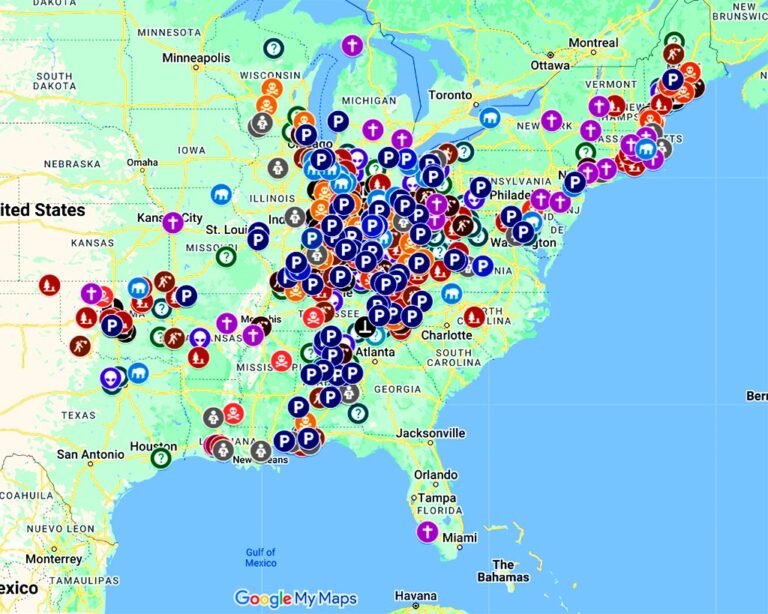In a world inundated with advertisements and marketing messages, brands are constantly seeking innovative ways to cut through the noise and capture the attention of their target audience. Enter influencer marketing – a dynamic and powerful strategy that leverages the reach and influence of social media personalities to promote products and services. But as the influencer marketing landscape continues to evolve, brands face a myriad of challenges in navigating this ever-changing terrain.
Amidst the allure of influencer partnerships lies a common misconception – that influencer marketing is a surefire path to success, devoid of pitfalls or setbacks. However, the reality is far more nuanced. From identifying the right influencers to measuring campaign effectiveness and fostering authentic relationships, brands encounter a host of challenges along the way. But fear not, for within these challenges lie opportunities for growth, innovation, and success.
In this article, we cover the art of influencer marketing, exploring proven strategies, best practices, and actionable insights to help brands navigate this dynamic landscape with confidence and clarity. From defining clear objectives and selecting the right influencers to fostering creative collaborations and measuring key performance indicators, we provide a comprehensive guide to unlocking the full potential of influencer marketing. So, whether you’re a seasoned marketer or a newcomer to the world of influencer partnerships, join us on this journey as we unravel the mysteries and master the art of influencer marketing together.
Defining Clear Objectives
Every successful venture begins with a clear sense of purpose. In influencer marketing, defining clear objectives is the cornerstone of a fruitful collaboration.
One of the most common pitfalls in influencer marketing is embarking on campaigns without clearly defined objectives. Without a roadmap, brands risk wasting resources on ineffective collaborations that fail to drive meaningful results.
Imagine investing significant time and money into partnering with an influencer, only to realize midway through the campaign that you’re not sure what you’re trying to achieve. This lack of direction can lead to confusion, wasted resources, and ultimately, a campaign that falls short of expectations.
But wait, you might say, isn’t the goal of influencer marketing simply to increase brand visibility and drive sales? While these are certainly common objectives, defining clear, specific goals allows brands to tailor their strategies more effectively and measure success more accurately.
So, how can brands overcome this challenge and define clear objectives for their influencer marketing campaigns? The solution lies in taking a step back and asking some fundamental questions about what they hope to achieve through influencer collaborations.
Brands should start by identifying their overall marketing objectives and then determine how influencer marketing fits into the larger strategy. Are they looking to increase brand awareness, drive sales, launch a new product, or engage with a specific target audience? Once the objectives are defined, brands can then set specific, measurable goals that align with these objectives. For example, if the goal is to increase brand awareness, the objective could be to reach a certain number of impressions or generate a specific level of engagement on social media platforms.
Research by Nielsen Catalina Solutions found that campaigns with well-defined objectives were 166% more likely to drive sales compared to those without clear goals. By setting specific and measurable objectives, brands can align their influencer collaborations with broader marketing strategies and track their progress effectively. This will help them gaurantee that their influencer marketing efforts are focused, strategic, and ultimately, successful.

Pick the Right Influencers
Influencers are the linchpin of influencer marketing campaigns, serving as the bridge between brands and their target audience. But finding the right influencers can be like searching for a needle in a haystack.
With countless influencers across various platforms, identifying the right ones to collaborate with can be overwhelming for brands. Choosing influencers solely based on their follower count or popularity can lead to mismatched partnerships that fail to resonate with the target audience.
Picture this: You partner with an influencer who boasts a large following, only to discover that their audience doesn’t align with your brand’s target demographic. Despite their popularity, their endorsement falls flat, and you’re left wondering where you went wrong.
But isn’t it enough to just look for influencers with a large following? Not necessarily. While follower count is important, it’s just one piece of the puzzle. Brands must also consider factors such as audience demographics, engagement rates, content quality, and alignment with brand values.
So, how can brands navigate this sea of influencers and identify the right ones to collaborate with? The key lies in a strategic approach to influencer vetting and selection.
Brands should start by clearly defining their target audience and identifying influencers whose audience demographics align with theirs. They should then assess influencers’ engagement rates, content quality, and authenticity to ensure they resonate with their audience. Additionally, brands should consider influencers’ niche expertise, brand affinity, and past collaborations to gauge their suitability for partnership.
According to a study by Linqia, 89% of marketers found that ROI from influencer marketing was comparable to or better than other marketing channels. This underscores the significance of partnering with influencers who resonate with the brand’s target audience and can authentically promote its products or services, leading to higher engagement and conversion rates.
By taking a holistic approach to influencer identification, brands can identify the right influencers who not only have a large reach but also the ability to authentically connect with their target audience, maximizing the impact of their influencer marketing campaigns.
Nurture Authentic Relationships
Influencer marketing is all about relationships – authentic, genuine connections that resonate with audiences and drive meaningful engagement. But cultivating these relationships requires time, effort, and a genuine commitment to mutual benefit.
In a landscape where influencer-brand partnerships often feel transactional, fostering authentic relationships with influencers can be a challenge. Brands may struggle to break through the noise and establish genuine connections based on trust, respect, and shared values.
Imagine reaching out to an influencer with a generic pitch, offering them compensation in exchange for promoting your product. Chances are, they receive dozens of similar offers every day, and yours gets lost in the shuffle. Without a genuine connection or value proposition, the partnership is doomed from the start.
But isn’t influencer marketing inherently transactional? While there’s certainly an exchange of value involved, successful influencer collaborations go beyond mere transactions. They’re built on authentic relationships, mutual respect, and a shared commitment to delivering value to both the influencer and their audience.
So, how can brands break free from the transactional mindset and nurture authentic relationships with influencers? The solution lies in adopting a relational, rather than transactional, approach to influencer partnerships.
Brands should invest time and effort into getting to know influencers on a personal level, understanding their interests, values, and motivations. They should engage with influencers’ content, show genuine appreciation for their work, and foster open communication channels. Collaboration should feel like a natural extension of the relationship, with both parties working together towards shared goals and objectives.
According to data from SocialPubli,70% of consumers feel more connected to influencers who share personal experiences or stories. By investing in meaningful interactions and collaborations, brands can establish rapport with influencers and their audiences, resulting in more impactful and effective campaigns. This allows them to lay the foundation for successful influencer collaborations that resonate with audiences and drive meaningful results.

Foster Creative Freedom
Creativity is the lifeblood of influencer marketing, breathing authenticity and vitality into brand collaborations. Yet, all too often, brands stifle this creativity by imposing rigid guidelines and stifling influencers’ creative freedom.
In an effort to maintain brand consistency and control the narrative, brands may inadvertently hinder influencers’ ability to create authentic, engaging content. This results in campaigns that feel forced, inauthentic, and fail to resonate with audiences.
Imagine partnering with an influencer known for their unique, creative style, only to micromanage every aspect of the collaboration. The result? Cookie-cutter content that lacks the authenticity and spontaneity that drew audiences to the influencer in the first place.
But isn’t it important for brands to maintain control over their brand image and messaging? While brand consistency is important, stifling influencers’ creativity can backfire, leading to campaigns that feel contrived and disconnected from the influencer’s audience.
So, how can brands strike the right balance between maintaining brand consistency and allowing influencers creative freedom? The solution lies in fostering a collaborative, co-creative approach to influencer partnerships.
Brands should provide influencers with clear guidelines and objectives while also allowing them creative freedom to interpret the brand’s message in a way that resonates with their audience. Collaborative brainstorming sessions, open dialogue, and mutual respect are key to co-creating compelling campaigns that feel authentic and engaging.
A study by TapInfluence and Nielsen Catalina Solutions found that influencer content was 92% more effective than traditional advertising formats. By allowing influencers to showcase their unique voice and style, brands can create content that resonates with audiences and drives higher levels of engagement and brand affinity. In other words, it is crucial to allow influencers to bring their unique perspective and creative flair to the table, brands can create content that captivates audiences, drives engagement, and ultimately, delivers results.
Ensure Transparency and Disclosure
Transparency is the bedrock of trust in influencer marketing. Without it, brands risk alienating their audience and facing backlash for deceptive practices.
One of the biggest challenges in influencer marketing is ensuring transparency and disclosure. With regulations governing sponsored content becoming increasingly stringent, brands must navigate a complex landscape of legal requirements and consumer expectations.
Imagine a scenario where an influencer promotes a product without disclosing that it’s a sponsored post. Their audience feels deceived, and the brand’s reputation takes a hit. Without transparency, even the most well-intentioned campaigns can backfire, eroding trust and credibility.
But isn’t it common practice for influencers to subtly promote products without explicitly stating that it’s sponsored content? While this may have been the case in the past, regulations such as the Federal Trade Commission (FTC) guidelines now require influencers to clearly disclose any sponsored content to their audience.
So, how can brands ensure transparency and compliance with advertising regulations in their influencer marketing campaigns? The solution lies in adopting a proactive approach to transparency and disclosure.
Brands should educate influencers on the importance of transparency and provide clear guidelines on disclosure requirements. This includes ensuring that sponsored content is clearly labeled as such, whether through hashtags like #ad or #sponsored, or a clear statement in the caption or video. These forms of transparency and disclosure are critical elements of ethical influencer marketing practices. According to a survey by the Federal Trade Commission (FTC), 93% of influencers indicated they disclose sponsored content to comply with FTC guidelines.
By ensuring transparent communication and clear disclosure of sponsored partnerships, brands can build trust with audiences and maintain credibility, safeguarding against potential backlash or legal issues.
And, because you cannot always take it for granted influencers will act according to your policies when representing you, brands should monitor influencer content to ensure compliance and take swift action in cases of non-disclosure. By prioritizing transparency and compliance with advertising regulations, brands can build trust with their audience and protect their reputation in the long run.

Measure Key Performance Indicators (KPIs)
In the chaotic world of influencer marketing, success is measured not by likes and shares, but by meaningful engagement and tangible results. But without a clear understanding of key performance indicators (KPIs), brands may struggle to evaluate the effectiveness of their campaigns.
One of the biggest challenges in influencer marketing is measuring success. With a myriad of metrics to track and analyze, brands may find themselves overwhelmed and unsure of which KPIs are most relevant to their goals.
Imagine investing significant resources into an influencer marketing campaign, only to be left scratching your head when it comes time to measure results. Without a clear understanding of which metrics matter most, brands risk misinterpreting data and making misinformed decisions about their future strategies.
But isn’t engagement rate the most important metric in influencer marketing? While engagement rate is certainly important, it’s just one piece of the puzzle. Depending on the campaign objectives, other KPIs such as reach, conversion rate, and return on investment (ROI) may be equally, if not more, important.
So, how can brands effectively measure the success of their influencer marketing campaigns and make data-driven decisions for future strategies? The solution lies in defining clear objectives and selecting KPIs that align with those objectives.
Brands should start by identifying their campaign objectives and then determine which KPIs are most relevant to measure success. For example, if the goal is to increase brand awareness, metrics such as reach and impressions may be more important, whereas if the goal is to drive sales, conversion rate and ROI would be key indicators.
Research by Influencer Marketing Hub found that 89% of marketers use engagement metrics to measure influencer campaign performance. By tracking metrics such as reach, engagement, and conversion rates, brands can assess the impact of their campaigns and optimize strategies for maximum effectiveness. Utilizing analytics tools and tracking software, brands can monitor campaign performance in real-time, gather insights, and make data-driven optimizations to maximize the impact of their influencer marketing efforts.
Adapt to Changing Trends
Influencer marketing is a dynamic and ever-evolving landscape, shaped by shifting trends, platform algorithms, and consumer behaviors. Brands that fail to adapt risk falling behind the curve and missing out on valuable opportunities.
One of the biggest challenges in influencer marketing is staying ahead of the curve and adapting to changing trends. With platforms constantly updating their algorithms and consumer preferences evolving rapidly, brands must constantly innovate and evolve their strategies to remain relevant.
Imagine investing time and resources into a campaign based on a popular social media platform, only to see engagement plummet when the platform changes its algorithm. Without staying abreast of industry trends and platform updates, brands risk their campaigns becoming obsolete overnight.
But isn’t it enough to just follow the latest trends and jump on the bandwagon? While it’s important to stay informed about industry trends, blindly following the latest fads without considering their relevance to your brand and audience can lead to ineffective campaigns.
So, how can brands stay ahead of the curve and adapt to changing trends in influencer marketing? The solution lies in maintaining a finger on the pulse of the industry and adopting a flexible, agile approach to campaign planning and execution.
Brands should invest in ongoing research and monitoring of industry trends, platform updates, and consumer preferences. This includes keeping a close eye on emerging platforms, new content formats, and shifts in consumer behavior. Additionally, brands should be prepared to pivot their strategies in response to changing trends, whether it’s experimenting with new content formats, adjusting campaign messaging, or exploring alternative platforms. A report by eMarketer revealed that 74% of marketers planned to increase their influencer marketing budgets due to changing consumer behavior. By monitoring industry trends, platform updates, and audience insights, brands can adapt their strategies to capitalize on emerging opportunities and maintain a competitive edge. Brands stay agile and adaptable to position themselves for success in the ever-evolving landscape of influencer marketing.

Provide Value to the Influencer’s Audience
Influencer marketing is a two-way street; it’s not just about what brands can gain, but also about what influencers and their audiences stand to benefit from the collaboration.
One of the challenges brands face in influencer marketing is ensuring that the content created provides genuine value to the influencer’s audience. Without this value, the audience may feel alienated or disengaged, leading to ineffective campaigns.
Imagine a scenario where an influencer promotes a product or service that doesn’t resonate with their audience’s interests or needs. The result? Disinterest, skepticism, and a lack of engagement. Without providing value to the influencer’s audience, brands risk damaging their relationship with both the influencer and their followers.
But isn’t it enough for influencers to simply promote a product or service to their audience? While endorsements play a role, successful influencer marketing goes beyond mere promotion. It’s about creating content that entertains, educates, or solves a problem for the audience.
So, how can brands ensure that their influencer collaborations provide genuine value to the influencer’s audience? The solution lies in understanding the audience’s interests, preferences, and pain points.
Brands should collaborate closely with influencers to understand their audience demographics, interests, and preferences. By aligning the brand message with the influencer’s content style and audience’s needs, brands can create content that resonates authentically. This could involve co-creating content that provides entertainment, education, inspiration, or solves a problem for the audience. Research by SocialPubli showed that 61% of consumers follow influencers for product recommendations. Aligning brand messages with audience interests and needs enables brands to create content that resonates authentically, fostering trust and loyalty among the influencer’s followers.By prioritizing value creation for the influencer’s audience, brands can foster trust, engagement, and loyalty, ultimately driving the success of their influencer marketing campaigns.
Offer Mutually Beneficial Partnerships
Successful influencer marketing collaborations are built on mutual benefit – a win-win partnership where both the brand and the influencer stand to gain value from the collaboration.
One of the challenges brands face is ensuring that influencer partnerships are mutually beneficial. Without clear value propositions and incentives for both parties, collaborations may feel one-sided, leading to dissatisfaction and strained relationships.
Imagine an influencer who feels undervalued or undercompensated for their work, or a brand that feels they’re not getting enough return on their investment. Without a mutually beneficial partnership, both parties may feel disillusioned and reluctant to collaborate again in the future.
But isn’t it enough for brands to offer influencers compensation in exchange for promotion? While compensation is certainly important, successful influencer partnerships go beyond monetary transactions. They involve creating value, building relationships, and fostering trust and respect.
So, how can brands ensure that their influencer partnerships are mutually beneficial for both parties involved? The solution lies in understanding each other’s needs, goals, and expectations.
Brands should approach influencer partnerships with a mindset of collaboration and mutual respect. This involves clearly communicating expectations, goals, and compensation upfront, and being open to negotiation and compromise. Additionally, brands should offer influencers opportunities for professional growth, exposure, and networking, beyond just monetary compensation. A study by Influencer Marketing Hub found that 90% of influencers preferred long-term partnerships over one-off collaborations. This can be done, in large part, through fair compensation, opportunity for professional growth, and creative freedom, brands can cultivate lasting relationships with influencers, driving sustained success in influencer marketing. By fostering a mutually beneficial partnership based on trust, respect, and shared goals, brands can lay the foundation for long-term success in influencer marketing.

Continuously Optimize and Improve
In the fast-paced world of influencer marketing, standing still is not an option. Continuous optimization and improvement are essential for staying ahead of the curve and driving long-term success.
One of the challenges brands face is complacency – the tendency to stick with what’s familiar and comfortable, rather than constantly striving for improvement. Without continuous optimization, brands risk stagnation and missed opportunities for growth.
Imagine a brand that launches a successful influencer marketing campaign and then rests on its laurels, assuming that their work is done. Meanwhile, competitors are innovating, adapting, and evolving, leaving the brand behind in the dust.
But isn’t it enough for brands to run occasional influencer campaigns and call it a day? While one-off campaigns may yield short-term results, sustainable success in influencer marketing requires a commitment to continuous learning, adaptation, and improvement.
So, how can brands ensure that they’re continuously optimizing and improving their influencer marketing efforts? The solution lies in embracing a culture of experimentation, learning, and adaptation.
Brands should regularly evaluate the performance of their influencer marketing campaigns, gather feedback, and identify areas for improvement. This could involve A/B testing different content formats, messaging strategies, or influencer partnerships to see what resonates best with their audience. Additionally, brands should stay abreast of industry trends, platform updates, and consumer preferences, and be willing to pivot their strategies accordingly. Data from Mention.com revealed that 63% of marketers found it challenging to measure influencer marketing ROI. By regularly evaluating campaign performance, gathering feedback, and experimenting with new strategies and tactics, brands can identify areas for improvement and refine their approaches for maximum impact and effectiveness. By embracing a mindset of continuous optimization and improvement, brands can stay ahead of the curve and drive sustained success in influencer marketing.
At a Glance
- Define Clear Objectives: Establish specific and measurable goals to guide influencer marketing campaigns, ensuring alignment with broader marketing objectives and providing a roadmap for strategic execution.
- Identify the Right Influencers: Consider audience demographics, engagement rates, and content quality when selecting influencers, ensuring alignment with brand values and target audience for effective collaborations.
- Nurture Authentic Relationships: Cultivate genuine connections with influencers based on trust, respect, and mutual benefit, fostering long-term partnerships and enhancing campaign authenticity and effectiveness.
- Foster Creative Freedom: Empower influencers to express brand messages authentically by providing creative freedom, allowing them to create compelling content that resonates with their audience and drives engagement.
- Ensure Transparency and Disclosure: Adhere to advertising regulations and guidelines by clearly disclosing sponsored content, building trust with audiences, and safeguarding brand integrity against potential backlash or legal issues.
- Measure Key Performance Indicators (KPIs): Track relevant KPIs such as engagement rates, reach, and conversion rates to evaluate campaign effectiveness, make data-driven decisions, and optimize strategies for maximum impact.
- Adapt to Changing Trends: Stay updated on industry trends, platform updates, and consumer preferences to remain relevant, seize emerging opportunities, and adapt strategies accordingly for sustained success in influencer marketing.
- Provide Value to the Influencer’s Audience: Create content that offers genuine value to the influencer’s audience, whether through entertainment, education, or solving a problem, fostering engagement, trust, and loyalty.
- Offer Mutually Beneficial Partnerships: Establish partnerships that provide value to both brands and influencers, fostering collaboration based on mutual respect, shared goals, and fair compensation for sustained success.
- Continuously Optimize and Improve: Embrace a culture of continuous optimization and improvement to drive success in influencer marketing, regularly evaluating campaign performance, gathering feedback, and making adjustments to maximize effectiveness and stay ahead of the curve.

What Now?
As we bring our exploration of influencer marketing to a close, it’s clear that amidst the complexities and challenges, there’s a simple truth: authenticity breeds connection. In the words of Maya Angelou, “I’ve learned that people will forget what you said, people will forget what you did, but people will never forget how you made them feel.” This sentiment resonates deeply in the realm of influencer marketing, where genuine connections are the currency of success.
Throughout our journey, we’ve seen how brands can harness the power of influencer partnerships to create meaningful connections with their audience. Whether it’s by providing value, fostering authenticity, or embracing creativity, the key to impactful influencer marketing lies in forging genuine relationships that resonate with people on a human level.
As we reflect on the insights and strategies shared in this article, let us remember that the heart of influencer marketing is not about transactions or metrics—it’s about people. It’s about making a real difference in the lives of those we touch, whether it’s through inspiration, entertainment, or solving a problem.
So, as you embark on your own influencer marketing journey, I leave you with this question: How will you make your audience feel? Will you inspire, entertain, or educate? Will you forge connections that transcend the digital realm and leave a lasting impact? The choice is yours. Embrace authenticity, nurture connections, and let your influencer marketing efforts be a force for good in the world.





















+ There are no comments
Add yours